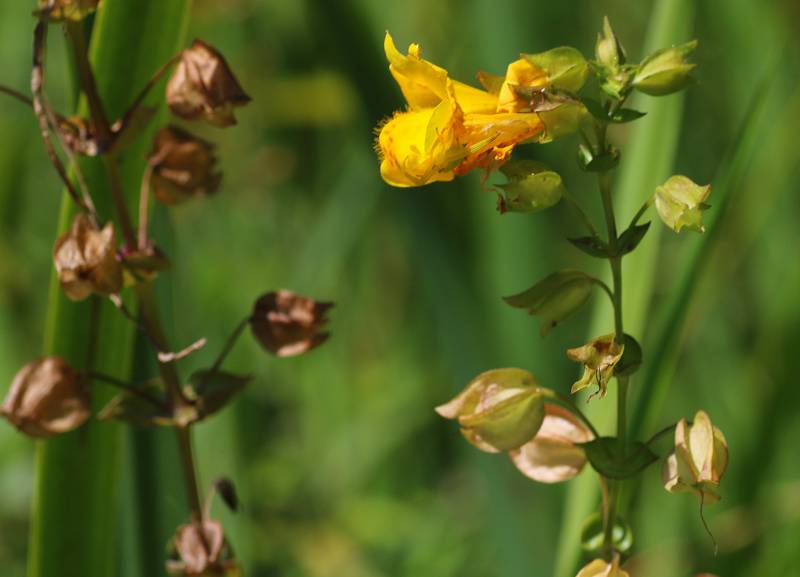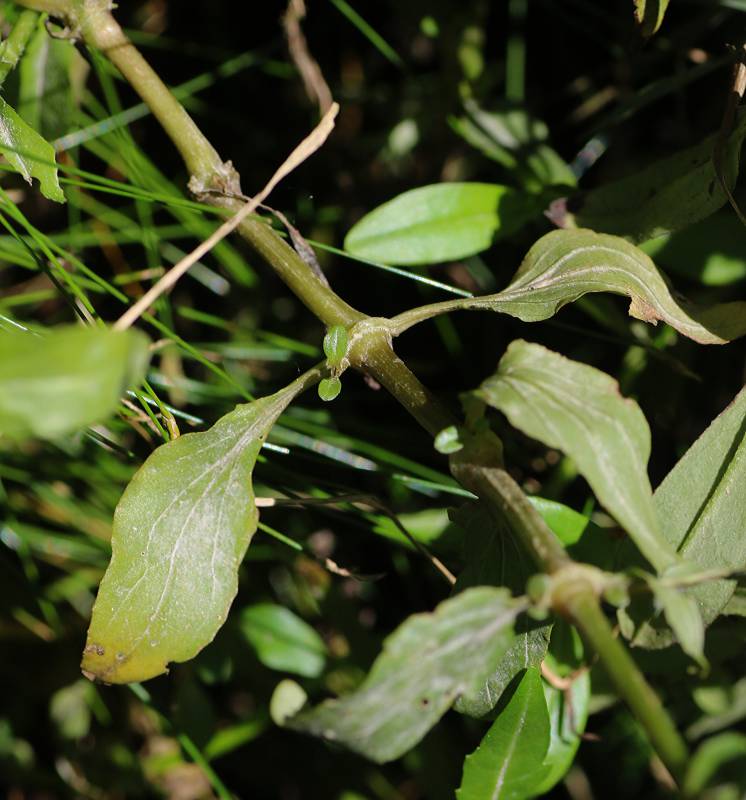Distribution: Occurring west of the Cascades in southwestern Washington; southwestern British Columbia to northwestern Oregon.
Habitat: Seeps, stream and river banks at low elevations.
Flowers: July-August
Origin: Native
Growth Duration: Perennial
Conservation Status: Not of concern
Rhizomatous perennials, producing long runners from basal nodes with sparse leaves; stems 15-80 cm, erect, not branched or few-branched, glabrous.
Leaves cauline, basal ones not typically persistent; petioles 10-25 mm and gradually merging into blade, becoming sessile distally; blade oblong-elliptic to oblong lanceolate, 25-60 mm long and 8-18 mm broad, palmate venation with 5-7 veins to nearly pinnate, base attenuate, margins evenly and shallowly toothed or scalloped with 10-20 teeth per side, apex acute to obtuse, surfaces glabrous.
Axillary flowers 2-8, emerging distalmost nodes; fruiting pedicels 20-25 mm, glabrous; calyx ovoid, inflated, compressed across sagittal plane, 13-14 mm, glabrous, throat closing; corollas yellow with few or no reddish markings, symmetric bilaterally, bilabiate; tube-throat funnel-shaped and 20-24 mm, protruding 10-15 mm beyond calyx margin; limb expanded 2-30 mm; styles prominently hirsute to villous; anthers not protruding, glabrous.
Publication: Phytoneuron 2012-39: 44. 2012.
PNW Herbaria: Specimen records of Erythranthe scouleri in the Consortium of Pacific Northwest Herbaria database
WA Flora Checklist: Erythranthe scouleri checklist entry
OregonFlora: Erythranthe scouleri information
E-Flora BC: Erythranthe scouleri atlas page
CalPhotos: Erythranthe scouleri photos







